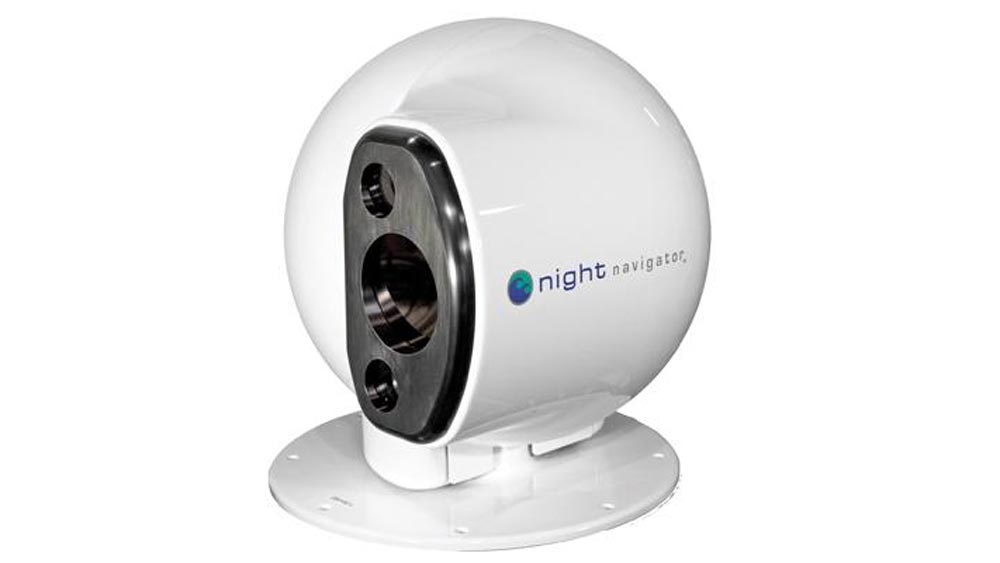
Image Is Everything
Current Corporation’s Night Navigator3 (systems start at $135,000) puts a high-definition daylight-usable camera in the same 15-inch-diameter housing as two night-vision systems. The thermal imager uses 384-by-288-pixel resolution and either 2X or 4X zoom in a field of view of approximately 20 degrees. A gated image intensified night-vision camera-a technology that shortens the frame to mere microseconds-provides sharpened views by reducing the blur of moving objects in low light. The high-definition day camera uses a 10X optical zoom, a 12X digital zoom, and a variable field of view, ranging from 5.4 to 50 degrees, to provide super-sharp images-suitable for viewing on a large flatscreen tv-for your sightseeing pleasure. The gyro-stabilized unit tracks targets with radar slaving and 360-degree continuous rotation. Current Corporation, (604) 461-5555; www.currentcorp.com
Hot Handheld
FLIR’s new First Mate handheld ($3,000) offers the magic of true see-in-pitch-dark thermal imaging. While its 240-by- 180-pixel resolution does not yield the detail seen from the M-636L, the camera seemed quite usable during an on-water demo. With a 24-degree-wide field of view-about 3.5 times that of standard 7 x 50 marine binoculars-it’s fairly easy to find a man overboard, or just to scan ahead for unlit problems. It’s also waterproof and runs five hours on four rechargeable AA batteries. The First Mate should not be confused with the many light-intensification monoculars seen at night-vision outlets-which need some ambient light to amplify, and are subject to image ghosting and flaring-but is somewhat similar to the thermography cams used by firefighters and sophisticated boatbuilders. FLIR says the First Mate’s focal length and feature set aren’t geared for such tasks, but the company nicely tends to underpromise. FLIR, (877) 773-3547; www.flir.com
The U.S. Coast Guard is asking all boat owners and operators to help reduce fatalities, injuries, property damage, and associated healthcare costs related to recreational boating accidents by taking personal responsibility for their own safety and the safety of their passengers. Essential steps include: wearing a life jacket at all times and requiring passengers to do the same; never boating under the influence (BUI); successfully completing a boating safety course; and getting a Vessel Safety Check (VSC) annually from local U.S. Coast Guard Auxiliary, United States Power Squadrons(r), or your state boating agency’s Vessel Examiners. The U.S. Coast Guard reminds all boaters to “Boat Responsibly!” For more tips on boating safety, visit www.uscgboating.org.








